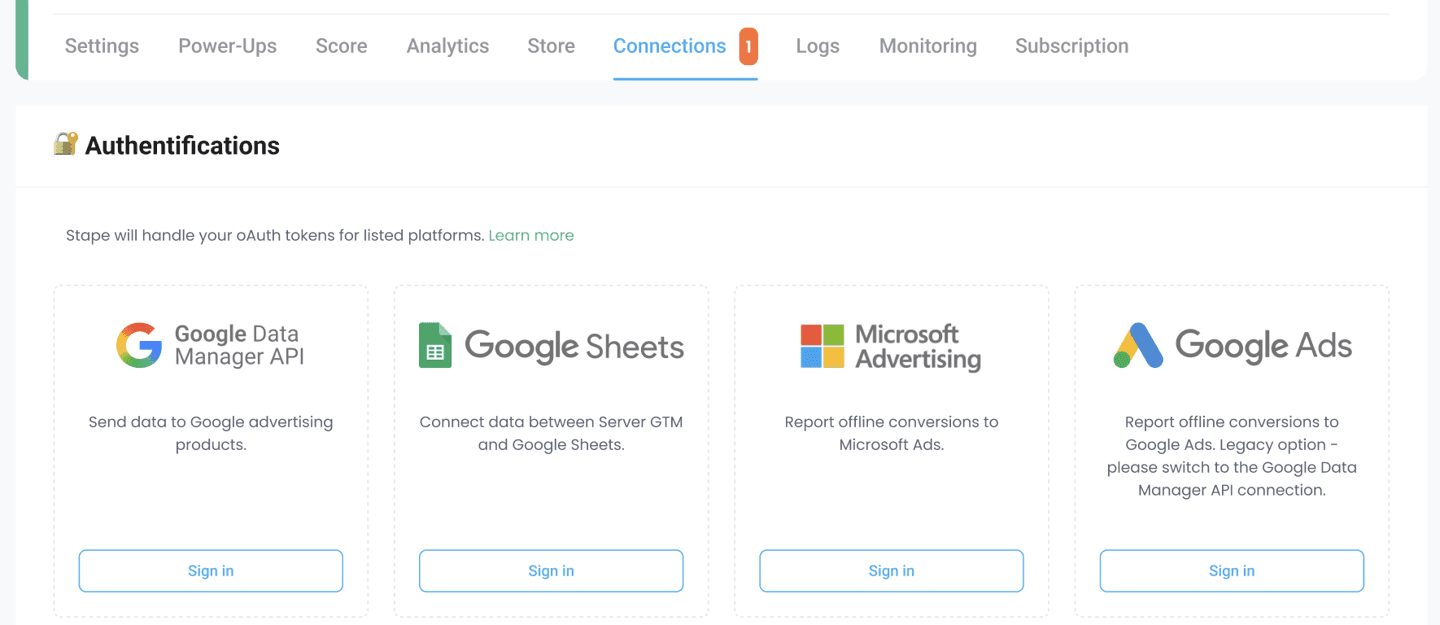Google Sheets is a cheap and easy-to-use platform to collect and manage data. Though there are a lot of fancy CRM systems, around 40% of markets and salespeople prefer recording website leads, sales, and campaign results in Google Sheets.
Connecting a website with Google Sheets allows you to automatically track any user interaction, or conversion inside the spreadsheet, making it easy for your sales and marketing team to operate and analyze data.
Previously the easiest and fastest way to send data from websites to Google Spreadsheets was using tools like Zapier. The biggest concern about using Zapier is price. The free plan includes up to 100 tasks (records) per month.
Stape team created Google Sheets tag for server Google Tag Manager. This blog post will show you how to write data from server Google Tag Manager to a Google Sheets using the Google Sheet tag for sGTM. Let's get started!
You can pull any data available in sGTM to Google Sheets. It can be event data, user data, website data, webhooks, etc.
The first use case that comes to my mind is recording lead or sales data to the spreadsheet. You can add order information, traffic source, and UTM tags to the CRM.
Google Sheets tag can also be helpful when debugging the sGTM setup. If you have some issues or doubts if the tag works correctly, you can send data to Google Spreadsheet to ensure all parameters were sent correctly. For example, let’s say you’ve implemented FB CAPI and think that sGTM does not send fbc parameters to FB, which affects conversion attribution to your FB campaigns. In this case, you can use the Google Sheets tag to add order IDs and fbc parameters to Google Sheets and see which orders were made after seeing a FB ad.
| Visit our blog post on how to track CLTV conversions for lead generation with Google Sheets Reader variable. |
If you are a Stape user, the process of the Google Sheets tag is simplified. Google authentication is entirely handled on the Stape side; you just need to use Google Sheets Connection to the Stape admin.
You can find Google Sheets Connection in the Connections tab. Then click sign in for Google Sheets and pass the authorization with your Google account.

2. Send data to the server GTM container. It can be done by setting up server-side Google Analytics 4 or Data Tag/Data Client.
3. Download and unzip a file with the Google Sheets tag from GitHub. Go to your server GTM → Templates → in the “Tag Templates” click “New” → import the file you downloaded.

Or
You can also add it via the server GTM Template Gallery.

4. Create a new tag. In the “Tags” section, click “New” and add the following configurations:
Below is an example of tag configuration:

5. Add the trigger for a tag.
6. Test the tag. You should see it triggered correctly in the server GTM debugger:

And the row should be added to the Google Sheets:

In case you don’t use Stape for server-side tracking or would like to handle your own authentication, you will need:
1. Enable Google Sheets API by using the link to Google Cloud Console, searching for “Google Sheets API” and clicking “Enable”.

2. Google Service Account with corresponding permissions.
| Find out how to connect your Google Service Account to Stape in our blog post. |
3. Choose Own Google credentials in the tag settings:

By connecting Google Sheets to your website, you can manage marketing campaigns and track conversions quickly. It will provide complete insight into which channels generate qualified prospects and act on new conversions faster.
If you need help setting up server-side tracking, please don't hesitate to contact us. We're happy to help! In the meantime, be sure to check out our other blog posts for more tips and tricks on using server Google Tag Manager.
All it takes is a few simple questions. Click Get A Quote, fill-up the form, and we will send you a quote.
Comments